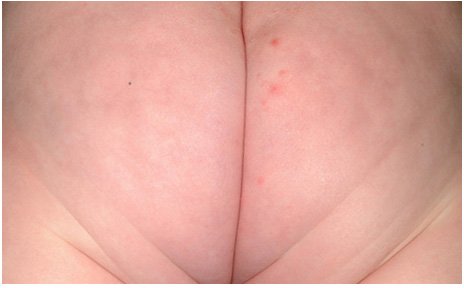“Your face is flushed. Very becoming.” That is always nice to hear. But what about when you have done nothing to cause red skin tone. Is it something to concern you? Or nothing at all. From sunburn to a walk in the brisk fall air to an allergic reaction, many things can cause your skin to become red or irritated. Gildshire made a deep dive into the subject and wanted to share with you what we found.
We already knew that skin redness can be irritating and uncomfortable. It might also be accompanied by other symptoms. Figuring out its underlying cause can help you treat your skin and keep it from happening again.
What Causes Red Skin Tone? And, What Does Red Skin Tone Mean?
We found out that there are many more possible causes of red skin tone than we knew. It can be confusing because so many of the reasons can overlap with each other. Let’s go over a few of them.
Diaper Rash:

What Causes Red Skin Tone? The red skin tone on the baby’s behind can be slight. But even a slight diaper rash is painful, for you and baby both.
A not uncommon sight for parents of small children or those involved in eldercare. The rash is located on the areas that have contact with a diaper. The skin looks red, wet, and irritated and is warm to the touch.
First Degree Burn:
This is the mildest level of burn injury because it affects just the first layer of the skin. It comes with one or more painful, dry, red areas that turn white when you apply gentle pressure. The skin may peel, but blistering is not present. The pain and redness should subside after 4-6 days.
Allergic Eczema:
This one is harder to diagnose because it may resemble a burn. Eczema is often found on hands and forearms. The skin becomes red, scaly, raw, and itchy. It is accompanied by weeping blisters that ooze fluid or become crusty.
Rosacea:
This one is an on-again/off-again chronic disease that cycles through a breakout, fading, and relapse. Relapses return as a result of spicy food, alcohol, excessive sunlight, or stress. The intestinal bacteria Helicobacter pylori can also cause a breakout. Common symptoms include facial flushing, red bumps, skin dryness, and sensitivity.
Contact Dermatitis:
This one appears anywhere from hours to days after contact with an allergen. The rash has visible borders between the unaffected skin and where your skin touched the irritating substance. The skin will become itchier depending on how long it was in contact and suffer from weeping blisters.
Angioedema:
This one is a form of severe swelling beneath the surface of the skin and may be accompanied by itching and hives. It is caused by an allergic reaction to food or medication. Additional symptoms can include stomach cramping and a rash on the arms, hands, or feet.
Heat Rash:
This irritating problem occurs when heat, friction, and sweat combine to make life miserable. It is caused by a blockage in the sweat glands. It develops on body parts that rub together, such as the inner thighs. Small fluid-filled bumps appear on the skin surface.
How to Get Rid Of the Redness On Your Face?
Of course, unexplained red skin on the face is the most perplexing of all. What to do if you have ruled out all of the above? It could be acne-related redness. If so, the sooner you can act on it, the better. Salicylic acid (such as Clearasil) can help. This mild acid promotes cellular turnover to remove the top layers of the skin. Dry skin can turn red. To stop dryness-related redness, reduce your exfoliation routine, and apply a cooling soft cloth compress.
No one likes to wake up in the morning with an unsightly red skin tone. But, before you write it off as an inconvenience, make sure that more isn’t going on than meets the eye. Red skin could be a symptom of a bigger problem, so Gildshire wishes you the best of luck and care.




